Chapter 1
Dyottville Glass Works
Chapter 2 – Report 36PH037
Chapter 2
Chapter 3 – Report 36PH037
Chapter 3
Chapter 4 – Report 36PH037
Chapter 4
Chapter 5 – Report 36PH037
Chapter 5
Chapter 6 – Report 36PH037
Chapter 6
Dyottville – 3D Recreation
3D Artifact Scans
Dyottville Artifacts – Gallery
Artifact Gallery
Dyottville Excavation – Gallery
Excavation Gallery
Dyottville Glass Works Site
Site Page Dyottville Glass Work Explore Dyottville Glass Work: Download Additional Reports The Dyottville study area conditions prior to the start of archaeological investigations were characterized by asphalt paving over Belgian block. Concrete paving related to early-twentieth-century rail lines was exposed beneath the Belgian block in the west half of the excavation area. Sections of
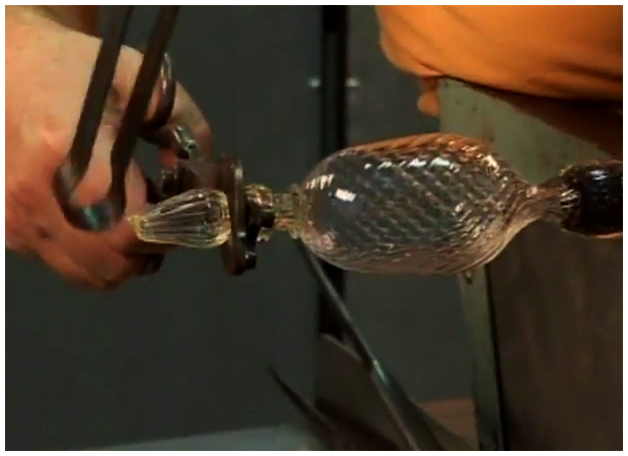
Free-Blown Glass
Free-blown glass is formed without the use of molds. The glassblower inflates the glass on the blowpipe and manipulates it with tools to make the desired form, such as a bowl, pitcher, or drinking glass. In a traditional glasshouse setting, the head glassblower of each team or “shop” is called the gaffer. To make
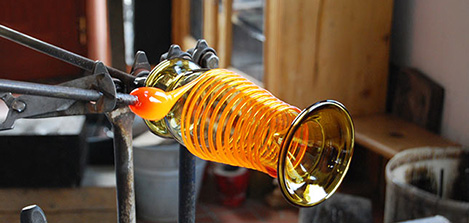
Glassmaking
Local Glass History Between the 1770s and 1920s, at least seven glass factories were situated in or near the I-95/Girard Avenue Project area. Although only small sections of two factories have been directly impacted and excavated thus far, a remarkable amount of 19th-century American glass has been recovered. Most of the artifacts were found in

Glassmaking
Glass is an extremely versatile material that is commonly used for various types of vessels, windows, and optics. We see it everywhere, but it is not easily defined. Glass is neither a true liquid nor a solid, but shares the qualities of both. It is often called an amorphous solid, and some scientists even consider
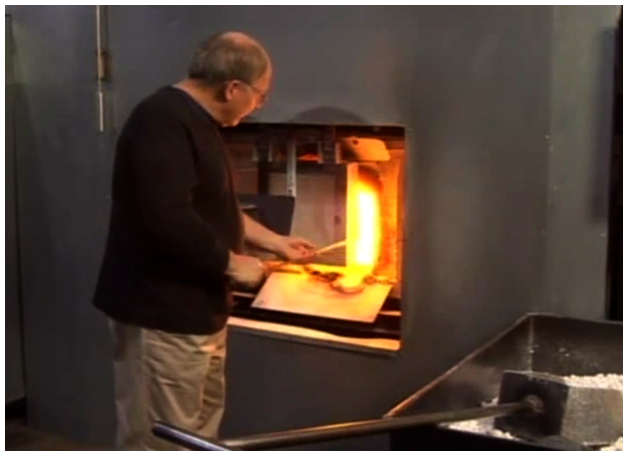
Glossary – Glassworking
A B C D E F G H I J K L M N O P Q R S T U V W X Y Z A Annealing Oven (annealer, tempering oven) A heated device or furnace area where glass is slowly cooled to relieve internal stress so it will not shatter. B Batch The
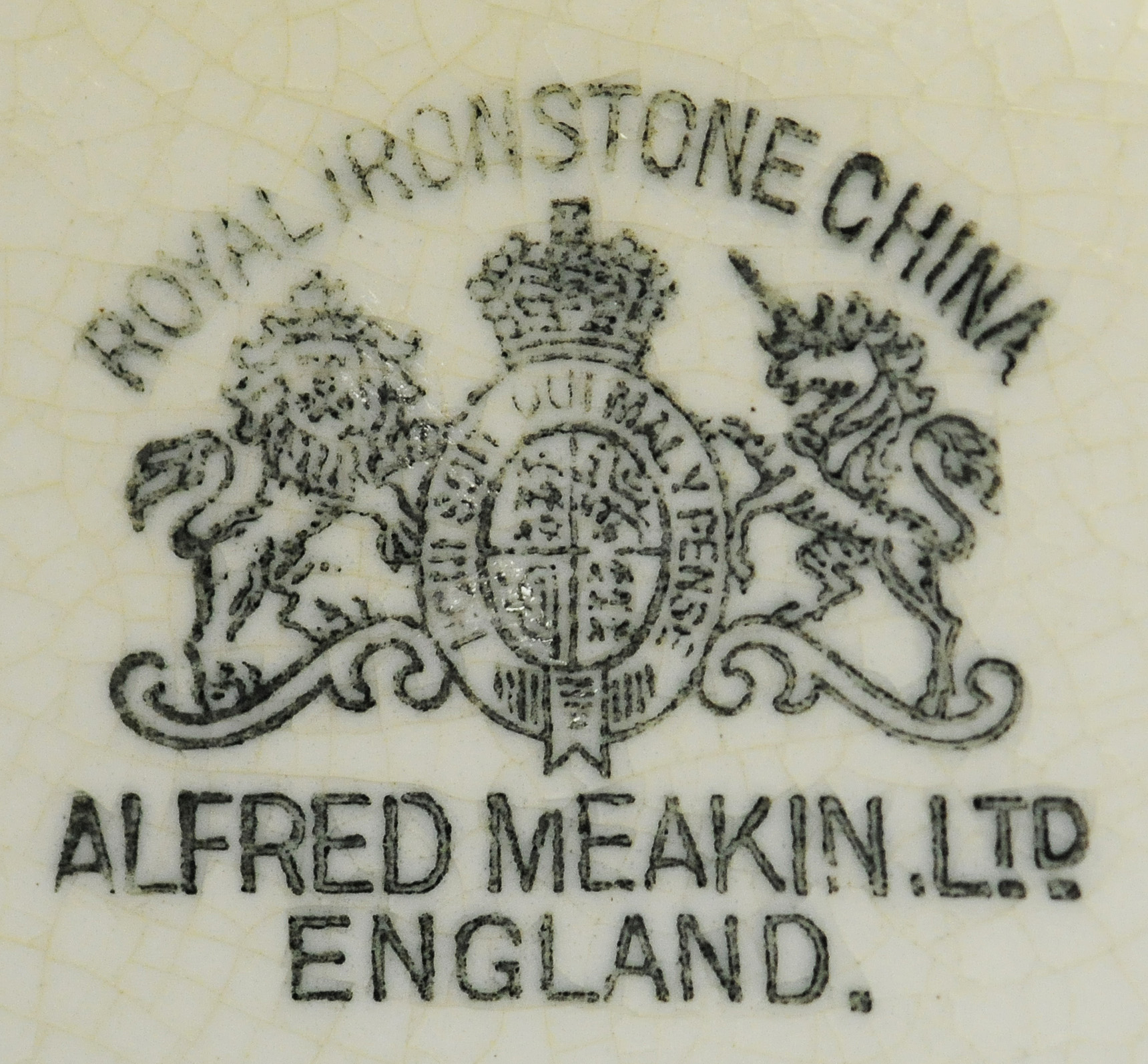
Maker’s Marks – Gallery
Maker’s Marks
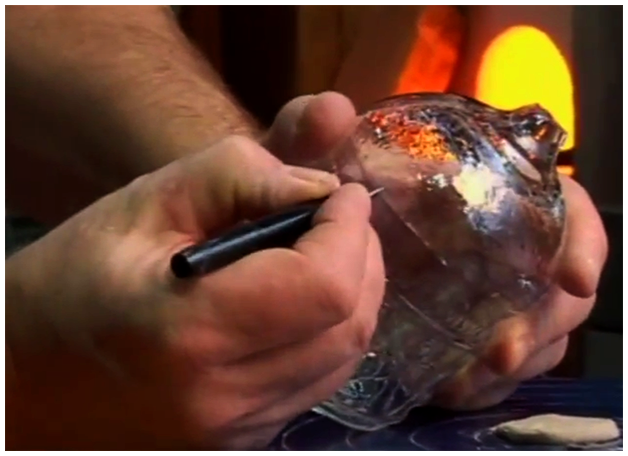
Mold-Blown Glass
Glass may be blown, either by mouth or machine, into a wood, clay, or metal mold to give it form, decoration, or both. Using molds enables quick, uniform reproduction of specific shapes, sizes, and designs. Dip Molds The simplest molds are one-piece dip molds. The glassblower lowers the gather of glass into the mold, inflates

Phase IB/II Archaeological Investigations within the Dyottville Glass Works/William Cramp & Sons Shipyard Site (36PH037)
Report 36PH037 the Phase IB/II Archaeological Investigations within the Dyottville Glass Works/William Cramp & Sons Shipyard Site.
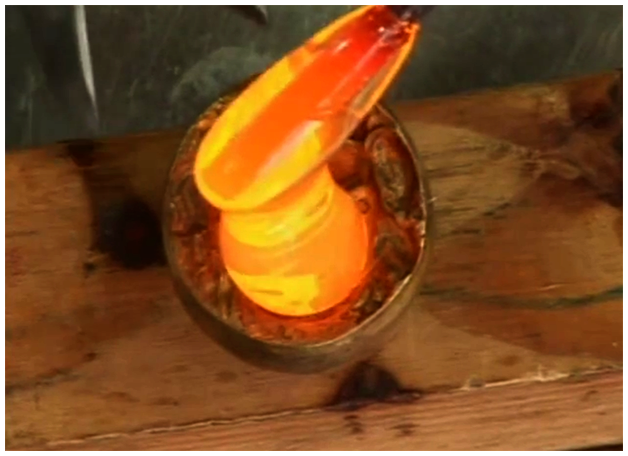
Pressed Glass
The concept of forcing glass into a mold to give it shape is an ancient idea, but tools specifically designed for this purpose developed gradually in the 18th and 19th centuries. Plier Press From about 1740 to 1900, a two-handled tool, sometimes called a plier press, was used to pinch glass chandelier drops, small stoppers,